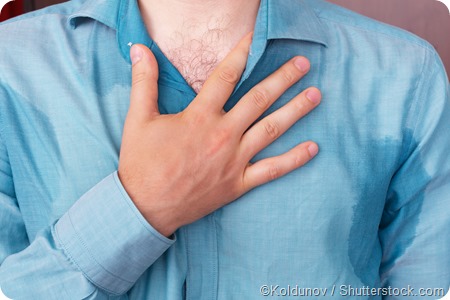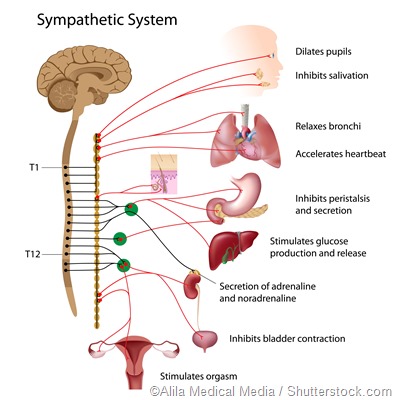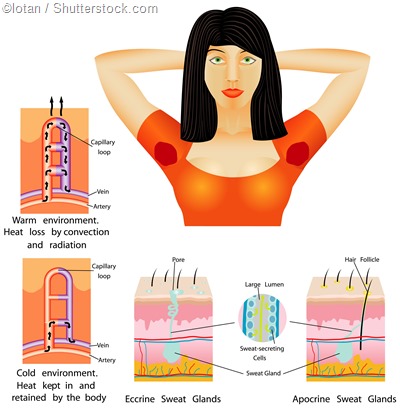Hyperhydrosis is the term used to describe abnormal, excessive sweating. This sweating does not necessarily occur only when the body needs to cool, in response to increased temperature or exercise, for example.

The sweating occurs when the body is not particularly overheating. “Hyper” means too much and “hydrosis” means sweating. It is a common condition that may affect the whole body or only certain parts of the body such as the underarms, soles of the feet, palms, groin,face or chest.
The sweating can be so excessive, that the sweat may be visible through clothes or drip from the hands, making it difficult for a person to use a computer or turn a doorknob, for example. The wetness of the skin can also lead to skin infections.
Although this condition does not represent any serious threat to health, it can disrupt a person’s daily activities, as well as causing embarrassment and anxiety.
Causes
Hyperhidrosis is classified into 2 types, based on whether the reason behind the condition can be found. The 2 types are primary hyperhidrosis or secondary hyperhidrosis and these are described in more detail below.
Primary hyperhidrosis:
Primary hyperhidrosis is the term used when no obvious identifiable cause for the excessivesweating can be identified. The condition is thought to be caused by an issue in the sympathetic nervous system (SNS), which regulates sweating. In this case, it is possible that there may be a genetic element to the condition.
The SNS is the part of our nervous system that controls automatic functions of the body such as the passage of food via the gastrointestinal tract or the passage of urine from the kidneys to the bladder.
Sweating is the body’s automatic mechanism for cooling itself when it is overheating. In this sense, the SNS acts like a thermostat, with signals being sent from the brain to the several million sweat-producing glands distributed across the body once its temperature goes up.

The sweat produced as a result cools down the skin and lowers body temperature. The bulk of these sweat producing glands are eccrine glands, which secrete a clear, odorless fluid that cools body temperature through evaporative heat loss. The other type of sweat gland is the apocrine gland, which produces a thick fluid that emits an odor when it comes into contact with skin surface bacteria.

Both of these glands are activated by nerves in response to stimuli such as heat, stress, hormones, or exercise. However, in patients with hyperhidrosis, sweat glands and particularly the eccrine glands, overreact to these stimuli and produce sweat to an unnecessary extent. If a person becomes nervous or stressed, the triggering of the sweat glands and resulting sweating can become even worse.
It is possible that a hereditary element involving genetic mutation may be the cause of primary hyperhidrosis, since it appears to run in some families. When genetic mutation occurs, the instructions in the cells that control the normal body function become scrambled, resulting in disruption of the body’s usual workings.
Secondary hyperhidrosis:
When the cause of the condition is clear, the condition is called secondary hyperhidrosis. The onset of secondary hyperhidrosis is often more sudden than the onset of primary hyperhidrosis and is likely to cause sweating across the whole body. This can be triggered by many underlying factors, including the following:
- menopause
- pregnancy
- anxiety
- low blood sugar or hypoglycemia
- hyperthyroidism
- diabetes
- obesity
- some medications such as anti-depressants and the beta-blockers
- certain infections, including HIV and tuberculosis
- Parkinson’s disease
- disorders of the blood cell or bone marrow including Hodgkin lymphoma
Treatment
The usual treatment approach to hyperhidrosis is the use of prescription antiperspirants, which are applied to affected areas. If the condition is persistent, a patient may need to try different medications or eventually seek other therapies. In severe cases, a surgical procedure to either remove the sweat glands or disconnect the nerves that trigger excessive sweating may be recommended.
Further Reading